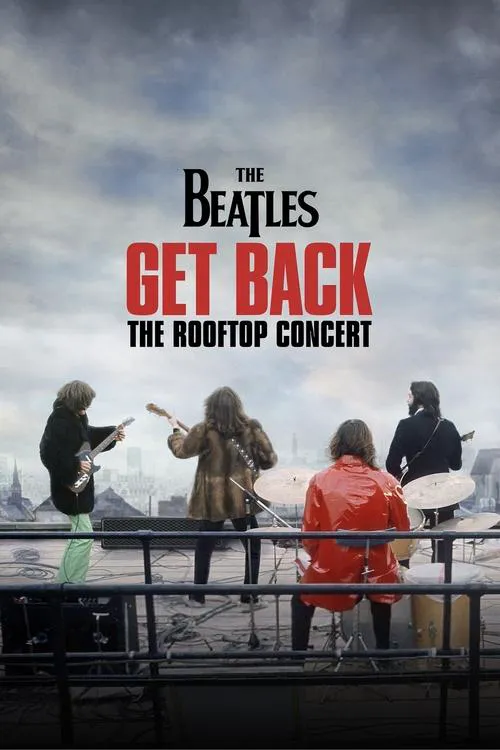The Beatles: Get Back - The Rooftop Concert

Intrigue
On a chilly January afternoon in 1969, the world's eyes turned to the rooftops of central London as the most influential band of the era, the Beatles, prepared to take the stage one last time. This impromptu performance marked the culmination of a tumultuous period in the Fab Four's history, as they worked tirelessly on what would be their final studio album, 'Let It Be.' In the months leading up to the rooftop concert, tension was palpable within the band. Paul McCartney, a relentless perfectionist, George Harrison, a rising star, John Lennon, a creative force, and Ringo Starr, the steady heartbeat, were all struggling to find their footing and define their place within the ever-changing musical landscape of the late 1960s. The Beatles had been together for nearly a decade, with their music serving as the soundtrack to a generation. With their earlier project, the 'White Album,' now firmly in their rearview mirror, the Beatles set out to record 'Let It Be,' an endeavor that promised to be their most honest and unfiltered work to date. They gathered at Twickenham Film Studios on January 2, 1969, with the anticipation that this album would be the perfect vehicle to showcase their newfound creativity and freedom. However, it quickly became apparent that the sessions would be riddled with creative disagreements, personality clashes, and an overarching sense of exhaustion. The Beatles had been going non-stop for what seemed like an eternity, touring internationally, recording multiple albums per year, and making countless television appearances. They were at a breaking point. As the days turned into weeks, and the weeks bled into a month, frustration mounted, and morale dwindled. On numerous occasions, the sessions ended abruptly, with the Beatles parting ways in a cloud of acrimony. George Harrison grew increasingly restless, feeling underappreciated and undervalued within the band. Meanwhile, John Lennon's growing unease with the direction of the project manifested in a growing distance from his bandmates. Meanwhile, the project seemed to be gaining momentum. Michael Lindsay-Hogg, a young director and friend of the band, was hired to document the sessions for a proposed documentary. He saw this moment as an opportunity to capture the raw, unbridled energy of the Beatles as they pushed the boundaries of their music. On the chilly afternoon of January 30, 1969, the tension that had been simmering beneath the surface boiled over into a burst of creative fervor. In the days leading up to the rooftop concert, Lindsay-Hogg had been coaxing the band to play a live set on the rooftop of their Apple Corps headquarters. The idea was initially met with skepticism, but eventually, it gained traction, with McCartney emerging as the driving force behind the performance. As the sun dipped below the London skyline, the Beatles made their way to the rooftop of their headquarters. Amidst the bustling streets of Savile Row, the band took their positions, with McCartney at the microphone, Harrison on guitar, Lennon on acoustic guitar, and Starr behind the drums. They launched into a spirited rendition of 'Don't Let Me Down,' the energy and camaraderie palpable as the crowd gathered below. The performance was an impromptu, unannounced spectacle, and the sheer surprise of it all added to its charm. Passersby, office workers, and curious onlookers all stopped to gaze at the spectacle unfolding before their eyes. They watched in awe as the Beatles tore through a rousing setlist that included staples like 'Get Back,' 'The Walk,' 'I've Got a Feeling,' and 'Birthday.' The rooftop concert was not without its hiccups. The band struggled to maintain volume, with police descending on the scene to issue a warning about noise levels. However, this only added to the sense of urgency and defiance that characterized the performance. As the night progressed, the Beatles' collective energy and passion were palpable. They pushed themselves to new heights, pouring their hearts and souls into every note. In this moment, it seemed as though they were rediscovering themselves, their music, and their place in the world. The impromptu rooftop concert would mark the final appearance of the Beatles as a cohesive unit. The performance was a fleeting moment of beauty, a beacon of hope and redemption in a time of great uncertainty. As the Fab Four stood together on the rooftop of their headquarters, basking in the glow of adoration from their adoring fans, they knew that they were about to embark on a new chapter in their journey – one that would ultimately lead to their break up and the end of their epochal partnership. This magical performance has endured as one of the most unforgettable moments in music history, a testament to the power and influence of the Beatles and their unshakeable impact on the world. The Beatles' rooftop concert will forever be etched in our collective memory as a final, defiant hurrah – a defiant rebuke to the challenges that had beset the band in the months leading up to it, and a celebration of their music, their legacy, and their unwavering dedication to each other and to the art of making music.
Critiques
Recommandations




